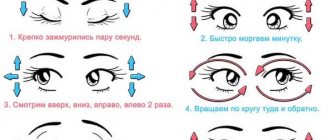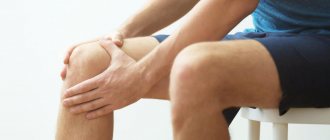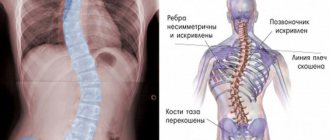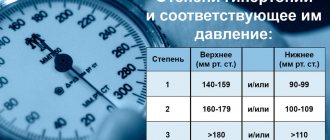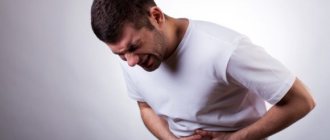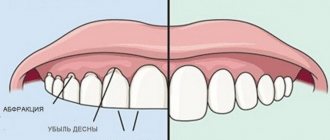The word “scoliosis” literally means “crooked” in Greek. This characterizes this disease quite accurately. Experts note that scoliosis is a curvature of the spinal column. The pathology is easily diagnosed during an x-ray. In the image, a specialist can see the angle of deviation of the ridge from the axis along the frontal plane.
Persistent changes in the spinal column are formed under the influence of genetic and external factors. Depending on the location of the pathological process, scoliosis can be cervical, thoracic, lumbar, or combined. The disease can appear at any age, but most often it is diagnosed in schoolchildren aged 6-7 years. In this article we will talk in detail about stage 1 scoliosis.
What it is?
Experts distinguish four main stages of spinal scoliosis. To determine the severity of the process, the angle of deflection of the ridge is measured. First degree scoliosis is almost invisible and easy to treat. In most cases, patients do not pay attention to the symptoms that arise. This is the danger of pathology. Due to the latent (hidden) current, a person leads a familiar lifestyle.
The first stage of scoliosis is characterized by the appearance of such signs, namely:
- slight stoop;
- aching back pain after light exertion;
- one shoulder is slightly higher than the other;
- asymmetry of the blades;
- flattened shoulders;
- pelvic distortion;
- change in head tilt.
On a note! Scoliosis of the 1st degree is often confused with ordinary stoop and is not addressed to a doctor. In the absence of timely diagnosis and treatment, the disease inexorably moves into the second stage, which will be much more difficult to get rid of.
As practice shows, most often specialists diagnose left-sided curvature of the spine. This is due to the fact that ninety percent of the world's inhabitants are right-handed. In such people, the muscle tone of the left side of the body is slightly weaker. But in left-handed people, on the contrary, right-sided scoliosis is more common.
Anatomical disorders of the spinal column lead to increased physiological curves and narrowing of the chest. This has a detrimental effect on the functioning of vital organs such as the heart and lungs.
With timely diagnosis of grade 1 scoliosis, complete restoration of damaged vertebrae is possible
At the second stage of the pathological process, clinical manifestations become more pronounced. Attacks of back pain become regular. The asymmetry of the shoulders and shoulder blades becomes obvious.
With scoliosis of the 3rd degree, a pronounced deformation of the back is observed. A visual bulge appears in the form of a rib hump. At the last stage, deformation of the torso occurs.
List of symptoms and diagnostic methods
Of course, like all diseases that take on a severe deformative nature, scoliosis that has developed to degree 1 is especially important to diagnose as early as possible. The effect of the treatment and the degree of further health and physical development of the child depend on this. Since the initial stage is characterized by an almost asymptomatic course, it is worth paying attention to the onset of age when the risk of pathology is high. The first age is one to two years, the second is 4-6, the third is 10-14.
After this, the following signs are monitored.
- Drop of one shoulder. Despite the fact that the child stands straight, one shoulder is higher than the other.
- Also, in a standing position with arms down, the clearance from the arm to the waist on one and the other side differs.
- There is an asymmetry of the shoulder blades - where there is a deflection, the shoulder blade is close to the spinal column and forms a protruding angle.
- The spinal column itself becomes noticeably curved if the patient leans forward.
Examination of the patient
Important! If you notice even just one of all the listed signs in your child, you should immediately contact a pediatric orthopedist for examination and diagnosis.
When diagnosing in a medical facility, the procedure begins with collecting an anamnesis and a detailed examination. The patient is examined in a standing position, then when he is sitting, followed by bending and examination while lying down.
Inspection while tilting
- When the child is standing, the length of the legs and their proportionality are measured. The degree of mobility (abnormal) of various joints is also determined - in the ankle, knee, hip.
- The degree of kyphosis (anatomical natural curvature) must be measured to identify pathology.
- The mobility of the lower back and the paired symmetry of various parts of the body - shoulder blades, shoulders, and in relation to them the waist and neck - are determined separately.
- When examining the chest, abdomen, and pelvis, they try to detect abnormalities. Muscle tone is assessed, and abnormalities such as muscle ridges and deformed rib plates are recorded.
- When a standing child bends, asymmetry of the spinal line is revealed.
From a sitting position, the length of the spinal column is measured, the degree of lordosis in the lumbar zone, lateral deviations of the torso, and the position of the pelvis in relation to the legs are revealed. From a lying position, you can make observations about the curvature of the spinal arch, examine muscle tone and palpate the position of internal organs.
The next stage is instrumental diagnostics, which in the case of first-degree scoliosis is done using an X-ray machine.
X-ray examination
Important! If there are suspicions of scoliosis or there are prerequisites for its occurrence, the patient must undergo x-rays regularly, at least twice a year.
The first x-ray is taken in a standing position. Then, clarification pictures are taken with the patient lying down and stretched to assess the degree of deformity. To clarify the data, a magnetic resonance imaging study can be performed.
Magnetic resonance imaging
Computer optical research
Causes
The main reasons for the development of curvature of the ridge are weakness of the muscular frame and uneven growth of the spinal column. Congenital anomalies can also lead to scoliosis. Among them are defects of the vertebrae, pelvic bones, chest, underdevelopment of tissue structures with the spine, as well as pathologies associated with cerebral palsy.
Among the external factors leading to the appearance and progression of the disease, the following can be distinguished:
Right-sided scoliosis 1st degree
- incorrect working posture at the table;
- staying at the computer for a long time;
- uncomfortable shoes;
- inactive lifestyle;
- increased physical activity;
- poor nutrition;
- pregnancy;
- obesity;
- incorrectly selected furniture for the child (chair, table);
- carrying a heavy bag on one shoulder.
In children of preschool and early school age, scoliosis can be caused by an immature and weak muscle frame, as well as improper sitting at a table or desk. Negligent attitude on the part of parents leads to the progression of pathological changes in the spine.
The formation of the disease at such a young age is due to the fact that the child’s skeleton is rapidly stretching. In this case, the muscles do not have time to increase in size and properly support the spinal column. Because of this, the ridge is in the wrong position for a long time.
Children need to be pointed out poor posture when they play and exercise. Parents must purchase an age-appropriate study table and chair. For sleeping, it is best to use a flat, hard mattress and a low pillow.
But if we talk about scoliosis in adolescence, then social networks, virtual games for a long time, as well as reluctance to play sports play a big role in the formation of the disease.
REFERENCE! Scoliosis of the 1st degree in adults is considered a normal variant.
Some diseases can also cause spinal disorders. These include:
- osteomyelitis;
- tuberculosis;
- hormonal imbalance;
- rickets;
- autoimmune pathologies;
- flat feet;
- pathologies of the nervous system;
- injuries;
- decrease in calcium in the body.
If during the period of active growth the child moves little, the muscles lose tone and poorly support the growing skeleton. This creates the preconditions for the development of scoliosis
Diagnostics
Diagnosis and treatment of S-shaped scoliosis is the task of an orthopedist. The doctor will initially collect anamnesis, i.e. data about the patient’s lifestyle, the nature of existing health complaints, and then conduct an examination. Initially, he will examine the patient’s back, and then be sure to ask him to lean forward as much as possible so that his fingertips reach his toes or at least strive for this position. In this position, changes in the spine are best visible.
Thanks to this simple test, you can already detect changes characteristic of S-shaped scoliosis of the 2nd degree:
- the position of one shoulder is higher than the other;
- formation of a hump in the spine;
- the presence of spaces between the ribs, their incomplete retraction;
- approaching the costal arch closer to the spine;
- asymmetrical arrangement of the blades;
- asymmetrical position of the waist triangles;
- shortening of legs or arms.
Also, S-shaped scoliosis is characterized by a decrease in muscle tone, in particular the abdominal muscles.
To confirm the diagnosis and accurately determine the degree of scoliosis, an X-ray examination of the spine in several projections is prescribed. Thanks to the obtained images, it is possible to make accurate measurements and calculate the angle of curvature of each arch, which will allow you to make the correct diagnosis, as well as understand whether you can try to correct the situation using conservative methods or whether surgical intervention is already required.
If necessary, the doctor may also recommend a CT or MRI. These are more modern and expensive research methods, but with their help you can collect maximum information about all the anatomical structures that form the spine and detect the slightest pathological changes in them.
Elderly patients may additionally be prescribed densitometry, i.e., an examination designed to determine bone density. This is important for detecting osteoporosis and determining the risk of developing complications associated with it.
Varieties
The most common method for measuring scoliosis curvature in our country was developed by V. D. Chaklin. The principle of measuring deformity is that the more degrees, the milder the severity of scoliosis. At the first stage of the disease, the deviation from the axis is less than 10 degrees.
Scoliosis of the 1st degree can occur in various variations. Depending on the direction and form of the deviation, three main types of the disease are distinguished:
- C-shaped. Is the most common type. It mainly appears in schoolchildren due to improper sitting at the desk. Appears in the lumbar and thoracic regions. C-shaped scoliosis tends to progress. The rate of development of the pathological process is directly related to the degree of load placed on the spinal column.
- S-shaped. Characterized by deformation of the ridge in two planes. Most often occurs in teenage girls during puberty.
- Z-shaped. A wave-like curvature of the spine occurs with the formation of three arches along the entire length of the back. Z-shaped scoliosis can have serious consequences. As a result of this deformation, the spinal column begins to actively twist. Compression of blood vessels and nerve roots occurs.
Depending on the location of the pathological process, spinal scoliosis is divided into the following forms:
- Thoracic (chest). The development of deformity is determined by the anatomical features of the spinal column.
- Lumbar (lumbar). It is extremely rare.
- Thoracolumbar (thoracolumbar). The deformity affects both the thoracic and lumbar regions.
The most common diagnosis is c-shaped scoliosis.
Dysplastic
Dysplastic (idiopathic) scoliosis is a lateral curvature of the spine, which is based on a violation of metabolic processes and blood supply in the paravertebral tissues and rotation of the vertebrae in the vertical plane.
Pathology develops for no apparent reason. There are many assumptions among experts, one of which is the peculiarities in the functioning of the right and left hemispheres of the brain. The disease is diagnosed in most cases during adolescence.
The deformity develops with dysplasia of the sacrolumbar spine, that is, an anatomical disorder of its shape and structure. As the vertebrae undergo changes, the vertical axis is disrupted and a primary scoliotic arch is formed. Most often it forms in the lumbosacral spine.
Cervical
Spinal deformation occurs at the site of vertebrae 1–7. There is an asymmetry in the tilt of the head, and growth slows down.
ATTENTION! Scoliosis of the cervical vertebrae is a dangerous disease that causes side effects and is difficult to treat.
As a result of joint deformation, the nerve endings are deprived of protection. During motor activity with the head, the nerve is pinched by the vertebrae and pain occurs. The neck is the location of the blood nodes that supply the brain. Dysfunction of blood vessels leads to migraines, loss of sensitivity and fatigue.
Chest
Thoracic scoliosis is difficult to detect even for a specialist, especially in the early stages of its development. Discomfort, soreness, rapid fatigue of the back - all these symptoms are often ignored by patients or even considered normal.
Characteristic features of the deviations are stoop, waist asymmetry, difference in shoulder height. The abdominal muscles lose tone.
Thoracolumbar
Spinal deformity begins with the 11th thoracic and ends with the first lumbar vertebra. The disease is mainly diagnosed in girls aged 8–10 years.
Thoracolumbar scoliosis can be determined using an X-ray of the spine. In a standing position, you can visually see that one shoulder is slightly higher than the other. The shoulder blades are at different distances. When bending forward, the curvature is more clearly visible. Physical activity and sitting in uncomfortable positions increase back pain.
Lumbosacral
Manifests itself in the form of displacement of the sacrum and pelvis. One leg becomes longer than the other. Patients are bothered by frequent pain in the lower back. Office workers and long-distance drivers are at risk for lumbar deformity.
Kyphoscoliosis
Curvature of the spinal column with kyphoscoliosis is observed simultaneously from several sides. The pathology includes two pathologies at once - scoliosis and kyphosis. Experts still cannot name the exact cause of the deformation. Nevertheless, scientists note the role of genetic predisposition to deformations of connective and bone tissues.
In the first stages of the development of the disease, the following symptoms appear:
- burning in the back;
- dyspnea;
- back pain that radiates to the arms and neck;
- shoulders and upper body are constantly lowered;
- narrowing of the chest;
- weakness of the lower back muscle corset.
Kyphoscoliosis is characterized by stooping and lateral curvature of the spinal column
As the pathology progresses, shortness of breath, numbness of the limbs, and loss of sensitivity appear. One arm becomes longer than the other.
A number of specialists treat kyphoscoliosis. Consultation with an orthopedist, rheumatologist, neurologist, surgeon and pediatrician may be required.
Symptoms
The nature of the manifestations of the disease is determined by its type, form and degree. Scoliosis may include:
- headache;
- asymmetrical position of the shoulders and shoulder blades;
- curvature of the chest;
- breathing problems, shortness of breath;
- lower back pain;
- one-sided back muscle tension;
- hump formation;
- change in posture, stoop;
- fast fatiguability;
- disorders of the digestive system and other disorders.
Often, even with minor changes in the position of the spine, acute back pain occurs, which can radiate to the limbs and other parts of the body. Their cause often lies in the infringement of nerves by bone structures or modified intervertebral discs. This leads to a decrease in the quality of conduction of bioelectric impulses along the nerves from the spinal cord to the corresponding organs.
As a result, their work cannot be fully controlled by the nervous system, which results in the occurrence of disturbances in their functioning, and over time, the development of organic disorders. This, in combination with the negative effect of scoliotic deformity of the ridge, quickly leads to the occurrence of diseases of the respiratory system, heart, kidneys, liver, stomach and other abdominal organs.
Moreover, which organs suffer more directly depends on in which part of the spine the curvature is observed and its degree. Thus, with deformation of the thoracic spine and infringement of the nerves extending from the spinal cord in this area, there may be disturbances in the functioning of the bronchi, lungs, liver, pancreas, genitals, etc. This manifests itself:
- shortness of breath, airway obstruction, regular coughing attacks, development of bronchial asthma;
- yellowness of the skin and/or sclera;
- arrhythmia;
- pain in the right hypochondrium or stomach area;
- increased blood sugar levels;
- indigestion, constipation or diarrhea;
- increased fatigue;
- pain in the lower abdomen;
- violation of potency;
- increased frequency of urination, etc.
Can it be cured?
This is the question asked by all people who have heard their diagnosis. There is a misconception that grade 1 scoliosis does not require treatment. However, it is not. The main danger of the pathology is the possibility of rapid progression. In advanced cases, scoliosis can only be eliminated through surgery. Along with this, internal organs also suffer. Due to compression and bending, they cannot fully function.
REFERENCE! Scoliosis can be treated at any stage, but therapeutic methods will be different.
After diagnosing scoliotic disease, the patient should be under constant supervision of a specialist. In the early stages, treatment involves the complex use of massage, exercise therapy, acupuncture, and correction with orthopedic corsetry. The main emphasis is on strengthening the muscular corset of the back with the help of therapeutic exercises and swimming.
Stage 1 scoliosis in adolescents should be treated with lifestyle changes. You will have to give up the habits that led to the disease and constantly monitor your posture
General recommendations
An orthopedic mattress has a therapeutic effect at night. It relaxes the vertebrae and promotes their traction. A properly selected pillow will ensure optimal blood circulation and maintain the anatomically correct position of the spine throughout sleep.
Particular attention is paid to correcting the deformity using a corset. The product is selected taking into account the patient’s height. The corset is equipped with metal ribs, which the doctor adjusts to the patient, taking into account the physiological curves of the spine.
Massage must be performed by a qualified professional. Such procedures improve the condition of the myotic tissue and restore the muscular balance of the back on both sides. Massage normalizes blood circulation and nutrition of soft tissues. Regular procedures help reduce the angle of curvature.
The basis for treating grade 1 scoliosis at home is physical therapy. A systematic approach to exercise therapy allows you to quickly and effectively correct the deformity. It is best to practice with a specially trained instructor or doctor.
Swimming is considered the safest sport for scoliosis, as the spine receives a natural load. The asymmetric functioning of muscle fibers is aligned, coordination is improved and the muscle corset is aligned.
Physiotherapy
Spinal deformity can be eliminated with a set of physical exercises only if the disease is the result of the body being in an incorrect position for a long time. If congenital scoliosis, caused by abnormal development of organs and structures, has been diagnosed, this type of treatment should be treated with great caution. You should first consult a doctor. In some situations, physical education may be completely contraindicated.
Exercise therapy provides for the implementation of certain rules, compliance with which will help to get the maximum effect from classes, as well as protect yourself from injuries and undesirable consequences.
A set of exercises for scoliosis should be agreed with your doctor
Anyone who has seriously decided to engage in physical therapy needs to know the following rules:
- Before starting classes, do a warm-up. This will help warm up and stretch the ligaments and muscles.
- Avoid sudden movements. Perform the exercises at a slow, smooth pace.
- Avoid increased physical activity. Do not use barbells and dumbbells.
- Do the exercises as prescribed by your doctor. The specialist has all the information about the diagnosed type of scoliosis, so he will help you choose the most optimal complex for you.
Let's look at the five best exercises for scoliosis:
- For the back muscles. To perform this exercise, you need to lie on your stomach and spread your arms to the sides. Lift your head up and lift your shoulders. At the same time, clench your hand into a fist and then unclench it. And you can also put your hands along your body and alternately lift your lower limbs.
- For the side muscles. Lie on your side. Slowly raise your top leg and lower it just as slowly. Then, as far as possible, lift both legs at the same time.
- For the abdominal muscles. Lie on your stomach. Place your hands at your sides. Raise your straight legs up one at a time. You can make the exercise heavier. To do this, raise your legs together and stay in this position for a few seconds.
- To correct posture. The exercise is performed while lying on your stomach. Place your arms along your body. Raise your head and shoulders and hold for a few seconds. Lower yourself smoothly, without jerking.
- To straighten the spine. Prepare a bag of sand no more than one kilogram in advance. Sit on a chair and place a weight on your head. Slowly stand up and walk around the room. Try to keep the bag on your head.
Treatment of scoliosis
The easiest way to cure a 1st degree curvature is that at this stage the curvature does not yet affect the internal processes of the body so much.
Most often, preventive methods are used for treatment: massage , swimming in the pool , sports , developing the right diet .
One of the most effective measures for scoliosis is massage, since it will help relax tense muscles and tone overly relaxed ones. Massage for scoliosis can only be entrusted to a specialist, otherwise there is a high risk of harming the patient and accelerating the development of scoliosis.
You should also approach sports with caution, since not all types of sports may be beneficial for scoliosis. Let us remember that one of the reasons for the development of the disease is called sport. Tennis, bowling, badminton and other asymmetrical sports are not suitable for patients with scoliosis.
Most exercises for scoliosis are aimed at strengthening muscles and developing correct posture in a person. Exercises that increase the flexibility of the vertebrae are not recommended for a patient with scoliosis. It is prohibited to use exercises from the gymnasts' arsenal. Only a qualified specialist can help you choose the right set of exercises.
What not to do?
Those who have been diagnosed with scoliosis should avoid prolonged fixed body positions. The position should be changed every twenty minutes, especially if you feel discomfort.
Avoid carrying bags and packages in one hand. It is better to give preference to a backpack, or try to evenly distribute the load into two bags so that you can carry them in both hands.
When engaging in physical education and sports, the following are prohibited:
- Power training. Contribute to increased stress on the spine.
- Acrobatics. Most of the exercises are sharp and asymmetrical.
- Jumping, running, somersaults.
- Football basketball. There is a lot of jumping going on during games. This negatively affects the condition of the intervertebral discs. There is a high risk of injury.
For scoliosis of the 1st degree, tennis is allowed. But in the second stage you can only play table tennis.
Prevention
Scoliosis can be cured, but it is much easier to prevent its development. The following rules will help you do this:
- Watch how you sit and stand. Body weight should be evenly distributed on both sides.
- Carry your bag on different shoulders. This will help avoid distortion. And it doesn’t matter what weight we are talking about.
- Do sports and exercise. Spend more time outdoors.
- Sleep at least eight hours a day. Use a firm mattress that will prevent your spine from twisting.
- Treat musculoskeletal diseases in a timely manner.
- Eat right. Enrich your diet with vitamins and minerals.
- During sedentary work, do not forget to take breaks. Take a walk and stretch your legs.
Summarizing
Scoliosis is a deviation of the spinal column from its normal state. Curvature of the ridge is a widespread problem of our time, affecting people of all ages. Schoolchildren are at risk. Deformation is provoked by incorrect body position at a table or desk, as well as a sedentary lifestyle. The first sign of pathology is stooping. At the early stage of the process, there is no back pain yet, but fatigue quickly develops with physical activity.
Scoliosis of the 1st degree is the mildest form of all 4. The development of the disease can only be accurately determined using x-rays. A careful examination of posture will allow you to purely visually notice the changes that have appeared. If you notice a slight curvature, you should not hope that it will go away on its own. Timely treatment of grade 1 scoliosis will quickly correct the disorder. A late visit to the doctor is fraught with the transition of the disease to an advanced form, which will be much more difficult to get rid of.
Scoliosis in adults and children
Treatment of scoliosis in children is carried out with the help of physical exercises selected in a special complex. The set of exercises depends on the physical condition of the child. The child will not be forced to wear a corset or lie on strange applicators - such treatment is useless and even harmful. Dr. Bubnovsky's center offers rehabilitation through kinesitherapy. In addition to correcting the position of the back, the physical condition of children and adolescents develops.
Adults also come to the center. For those who have 1 or 2 degrees of illness, a private training program is drawn up for them.
People with grades 3 and 4 are difficult to help, but exercise reduces pain.

